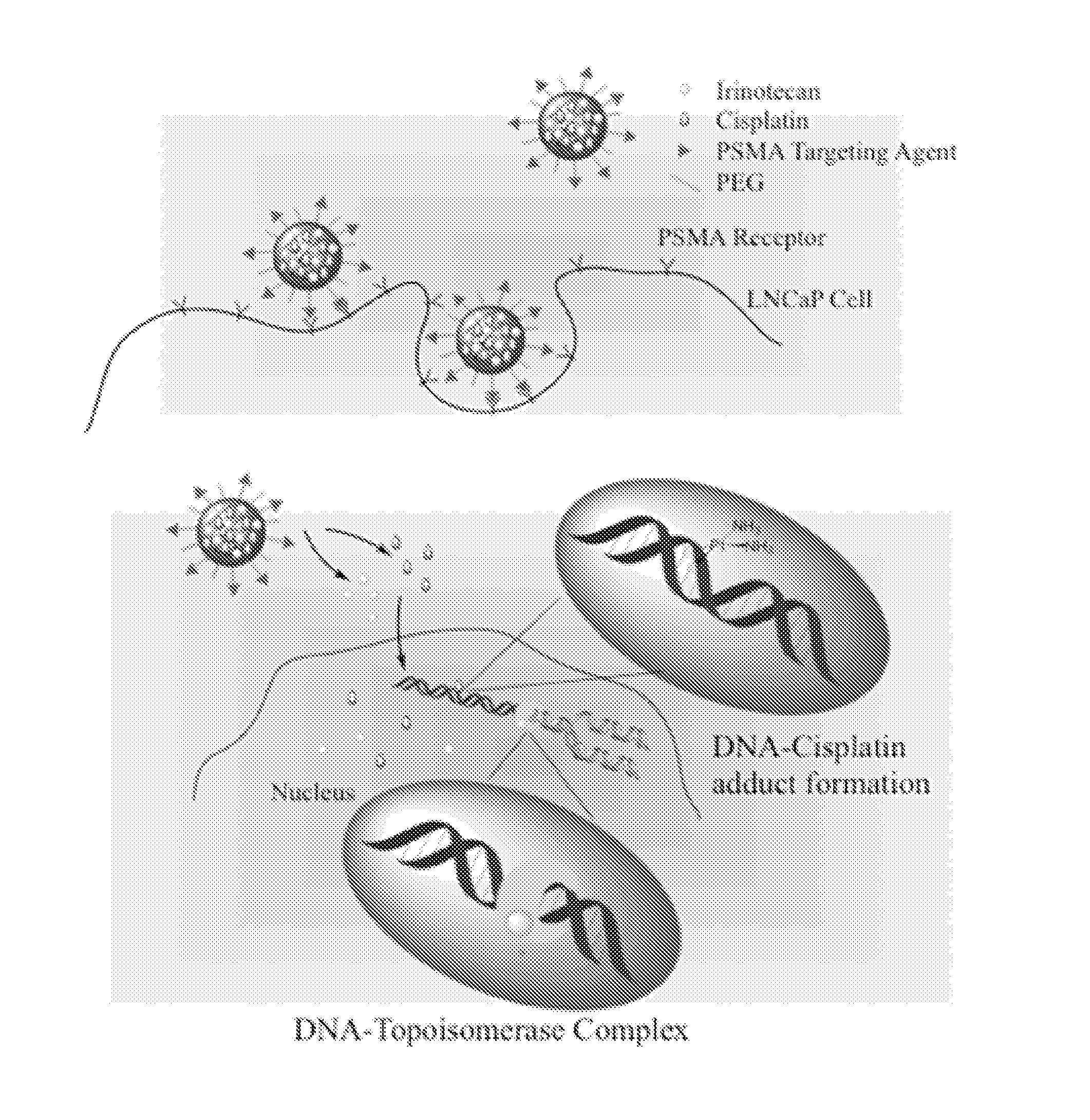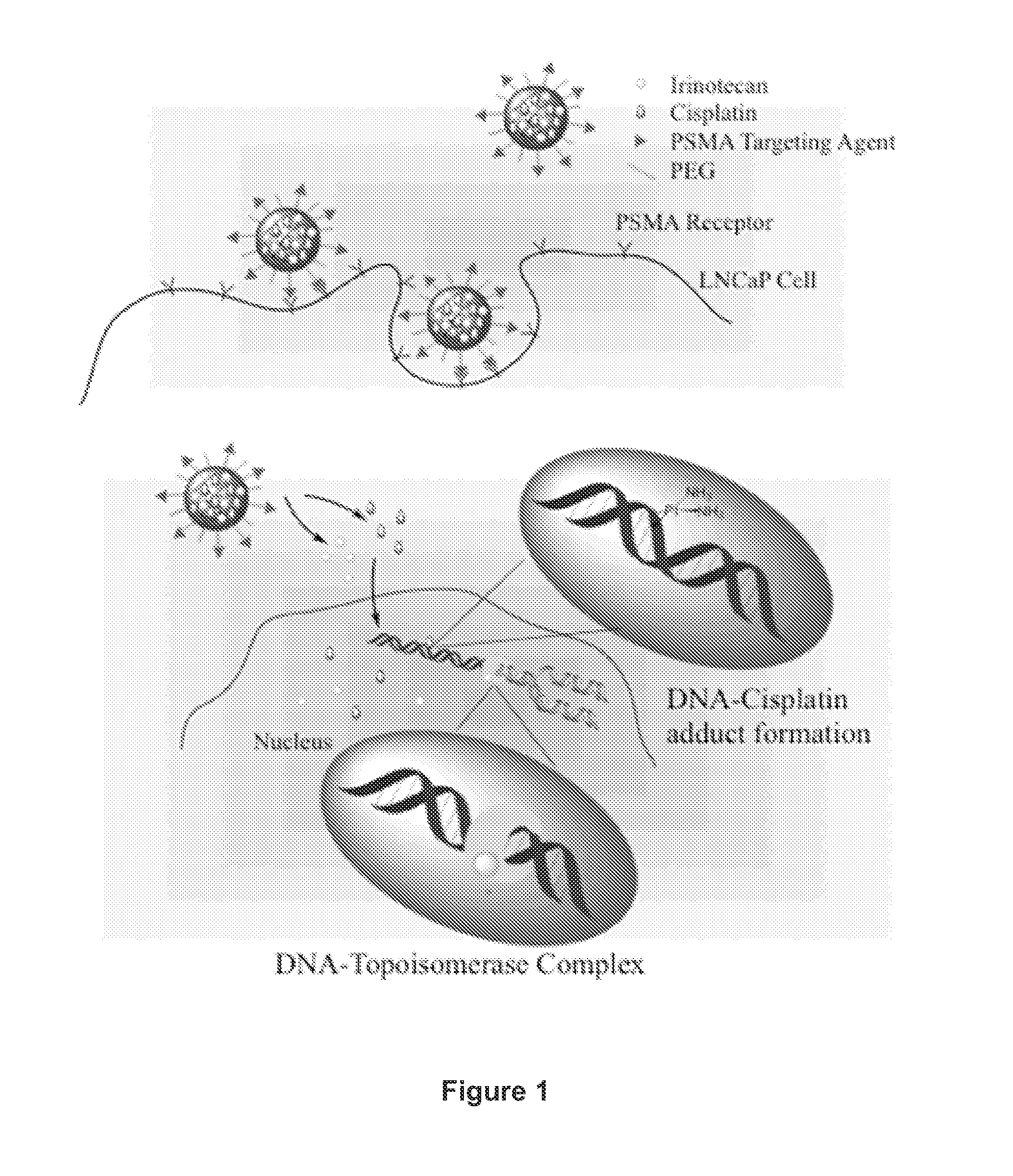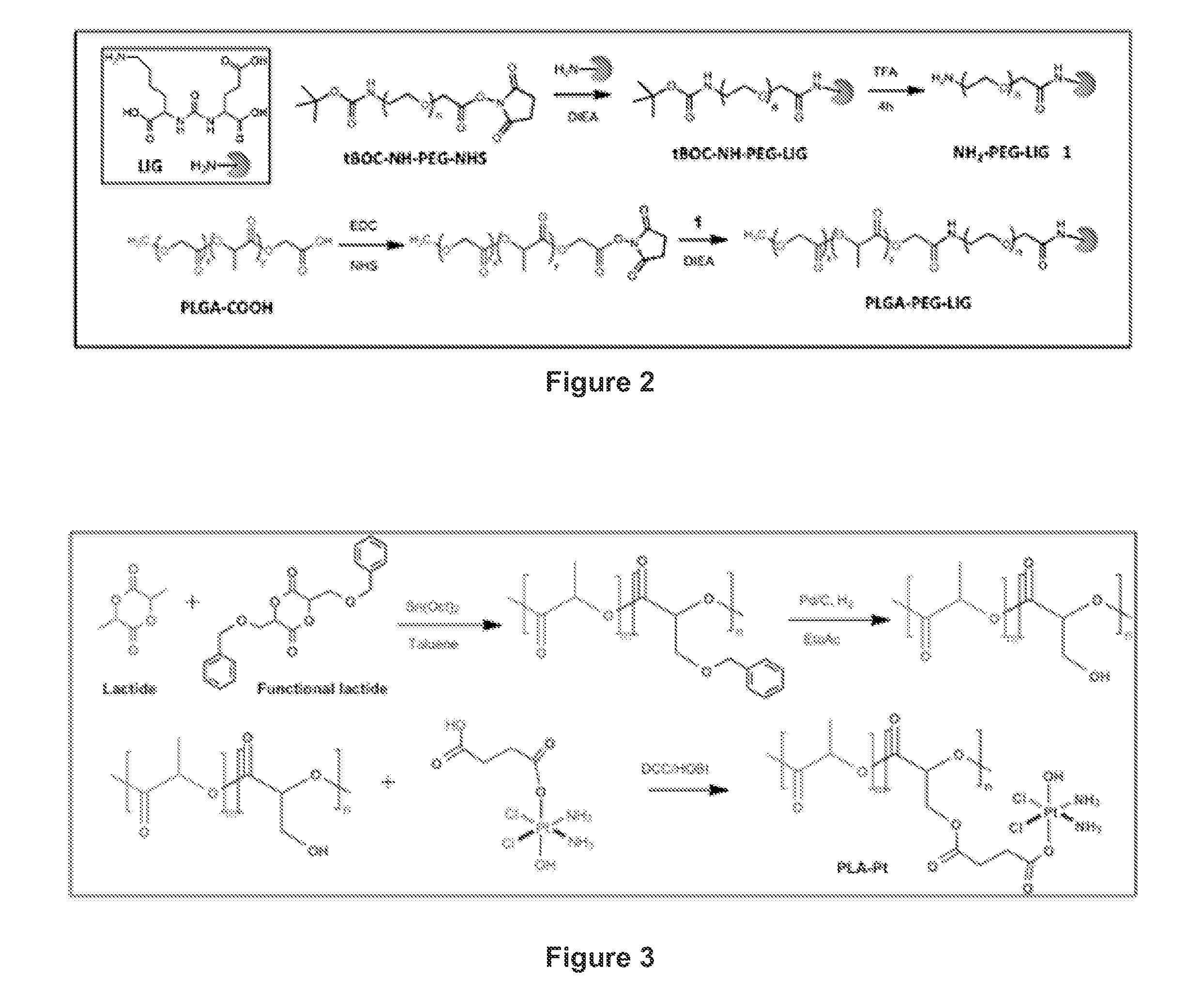Nanoparticles For Targeted Delivery of Multiple Therapeutic Agents and Methods of Use
a technology of nanoparticles and therapeutic agents, applied in the field of cancer biology and medicine, can solve the problems of more serious side effects, difficult dosing and scheduling of each drug,
- Summary
- Abstract
- Description
- Claims
- Application Information
AI Technical Summary
Benefits of technology
Problems solved by technology
Method used
Image
Examples
example 1
Prostate Specific Membrane Antigen (PMSA)-Targeted Nanoparticles Containing Unconjugated Irinotecan and Use of the Nanoparticles to Mediate Prostate Cancer Cell Death
[0170]PMSA-targeted nanoparticles were produced that contain the combination of a Pt-containing chemotherapeutic agent and an unconjugated topoisomerase inhibitor. The cytotoxic effect of these nanoparticles was tested using a prostate cancer cell line. The materials and methods used to perform these experiments are described below.
Materials and Methods
[0171]Materials
[0172]Poly(D,L-lactide-co-glycolide)-co-poly(ethylene glycol) with terminal methoxy groups (PLGA27K-mPEG5K) was obtained from Boehringer Ingelheim (Ingelheim am Rhein, Germany). Poly(D,L-lactide-co-glycolide) (50 / 50) with terminal carboxylate groups (PLGA, inherent viscosity 0.67 dL / g, MW˜45 kDa) was obtained from Lactel (Pelham, Ala.). tBOC-NH-PEG-NH2 (MW 5000) and tBOC-NH-PEG-NHS (MW 5000) were purchased from Laysan Bio, Inc (Arab, Ala.). 3-(4,5-Dimethylt...
example 2
PMSA-Targeted Nanoparticles Containing Conjugated Irinotecan and Use of these Nanoparticles to Mediate Prostate Cancer Cell Death
[0192]Using the methods generally described in Example 1, nanoparticles were formed that contain PLGA-PEG-LIG, PLGA-PEG, PLA-cisplatin, and PLA-irinotecan. The average size and the ability of these nanoparticles to induce cell death in a human prostate cancer cell line were assessed.
Materials
[0193]Polymers
[0194]The synthesis of PLA-irinotecan was accomplished by first synthesizing a PLA-OBn via a ring opening polymerization reaction, where a toluene-functionalized cyclic lactide monomer and simple lactide monomer were dissolved in a toluene solution containing benzyl alcohol (initiator) and Tin catalyst. The resulting solution was refluxed at 120° C. for 10 hours. Then, the hydroxyl functionalized biodegradable polylactide polymer (PLA-OH) was obtained by benzyl deprotection using a Pd / C catalyst at 50 psi pressure for 8 hours. From this polymer, the carbo...
example 3
PLA and PLGA-PEG Nanoparticle Tolerance
[0199]A combination of PLA-OH and PLGA-PEG polymers (described in Example 1) were mixed at a molar ratio of 1:1 to generate five different compositions. The nanoparticles in each of the five different compositions were generated using a different total concentration of polymers. Each of the five nanoparticle compositions were administered by tail vein injection (intravenously) once at day 0 to healthy 5- to 6-week old Swiss albino mice having a weight of around 21.9 grams to 25.0 grams, and the viability and weight of each mouse was monitored each day up to a total of 8 days. The nanoparticles present in the compositions were generated using the methods generally described herein. The administered compositions were generated by suspending the nanoparticles in saline. The total dose of polymers administered to mice was 87 mg / kg (I mouse), 174 mg / kg (2 mice), 870 mg / kg (3 mice), 1740 mg / kg (2 mice), and 4360 mg / kg (3 mice).
[0200]The results of th...
PUM
| Property | Measurement | Unit |
|---|---|---|
| diameter | aaaaa | aaaaa |
| diameter | aaaaa | aaaaa |
| contact angle | aaaaa | aaaaa |
Abstract
Description
Claims
Application Information
 Login to View More
Login to View More - R&D
- Intellectual Property
- Life Sciences
- Materials
- Tech Scout
- Unparalleled Data Quality
- Higher Quality Content
- 60% Fewer Hallucinations
Browse by: Latest US Patents, China's latest patents, Technical Efficacy Thesaurus, Application Domain, Technology Topic, Popular Technical Reports.
© 2025 PatSnap. All rights reserved.Legal|Privacy policy|Modern Slavery Act Transparency Statement|Sitemap|About US| Contact US: help@patsnap.com



